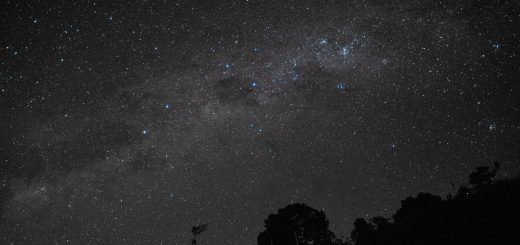Sight Unseen: Navigating Depths of Remote Viewing

Before diving in, please note: This post is for informational purposes only. If you’d like to know more about how we approach topics, feel free to check out our friendly Disclaimer Page.
Hey there, amazing readers! 🖐️ Just a quick note: yes, we know there are a lot of ads here. Trust us, we get it—it’s not the prettiest look, but they help us keep this blog alive and kicking. Those pesky little ads cover the costs of all the behind-the-scenes magic, from hosting and tech stuff to creating content we hope you’ll love.
We’re committed to delivering quality posts, and your support (even just sticking around despite the ads) means everything to us. So, bear with us, and thanks for helping us keep the good vibes rolling. Now, on to the fun stuff! 😉
TRANSLATE BUTTON AT THE END OF THE ARTICLE
Sight Unseen: Navigating Depths of Remote Viewing
Overview
Remote viewing, a phenomenon often shrouded in mystery and skepticism, is a fascinating ability that allows individuals to perceive and gather information about distant locations, objects, or events using only their minds.
With roots reaching back to ancient times, remote viewing has been studied and practiced by researchers, scientists, and individuals seeking to explore the depths of human consciousness.
In this article, we will delve into the history, mechanics, applications, benefits, limitations, and ethical considerations of remote viewing, as well as the scientific research surrounding its validity.
By the end, we hope to shed light on this intriguing practice and its potential for expanding our understanding of the world.
What is Remote Viewing?
Remote viewing can be defined as the mental process of obtaining information about a distant or unseen target using extrasensory perception (ESP).
Unlike clairvoyance or psychic abilities, remote viewing involves a structured protocol and methodology that allows individuals to access information beyond their usual perceptual abilities.
In this practice, the viewer is typically provided with a target, which can be a location, object, or event, and is asked to describe, sketch, or provide any relevant information about the target, often without any prior knowledge or sensory cues.
The History of Remote Viewing
The origins of remote viewing can be traced back to ancient civilizations, where practices such as scrying, divination, and prophecy were used to gain insights into distant or hidden information.
However, it wasn’t until the 20th century that remote viewing gained attention in a more structured and scientific manner.
In the 1970s, the United States government initiated a program known as the Stargate Project, which aimed to investigate the military potential of remote viewing.
This program, along with the involvement of renowned remote viewers such as Ingo Swann and Pat Price, played a significant role in popularizing the concept of remote viewing.
How Does Remote Viewing Work?
The mechanics of remote viewing are not yet fully understood, but several theories attempt to explain its workings.
One theory suggests that remote viewing operates through the phenomenon of non-local consciousness, where the viewer’s awareness extends beyond their physical body.
According to this theory, the viewer taps into an interconnected field of information that exists outside of space and time, accessing information about the target through their consciousness.
Another explanation revolves around the concept of quantum entanglement, where particles can be connected regardless of distance.
It is proposed that the viewer’s consciousness entangles with the target, allowing them to perceive information about it.
However, these theories remain speculative and further research is needed to fully comprehend the mechanisms at play.
Applications of Remote Viewing
Remote viewing has found applications in various fields, despite its controversial nature.
In the military and intelligence sectors, remote viewing has been explored as a tool for gathering information about potential threats, locating missing persons, or identifying hidden objects.
Additionally, archaeologists have utilized remote viewing to gain insights into historical sites and artifacts that are difficult to access physically.
Moreover, some individuals use remote viewing as a means of personal growth, self-discovery, and exploring the depths of consciousness.
Exploring the Benefits of Remote Viewing
Remote viewing offers several potential benefits for both individuals and society as a whole.
By expanding our perception beyond conventional means, remote viewing enables us to access information that may be crucial in decision-making processes, problem-solving, and gaining unique insights.
It also has the potential to enhance intuition, creativity, and spiritual exploration.
Furthermore, remote viewing can foster a deeper sense of interconnectedness and empathy, as it allows individuals to perceive events, locations, or people outside of their immediate physical presence.
Techniques for Enhancing Remote Viewing Abilities
There are various techniques and practices that individuals can employ to enhance their remote viewing abilities.
One commonly used technique is called "ideogramming," where the viewer attempts to sketch or write a symbol that represents the target before diving into the details.
This process helps bypass conscious analysis and allows the subconscious mind to convey information about the target.
Another technique is known as "controlled remote viewing" (CRV), which involves a structured and step-by-step process to gather information about the target.
This method emphasizes the separation of different aspects of perception, such as sensory data, emotions, and analytical thinking, to gain a more accurate understanding of the target.
Meditation and mindfulness practices can also be beneficial in improving remote viewing abilities.
Unlock your potential with the Advanced Intuition Training Course – start here.
By cultivating a calm and focused state of mind, individuals can enhance their receptivity to information and strengthen their intuitive faculties.
Challenges and Limitations of Remote Viewing
Remote viewing is not without its challenges and limitations.
One of the main difficulties is the subjective nature of the information obtained.
Since remote viewing relies on the interpretation and translation of impressions, symbols, or sensations received by the viewer, misinterpretation or personal biases can affect the accuracy of the data.
Moreover, remote viewing is a skill that requires practice and dedication to develop.
Not everyone may possess a natural aptitude for remote viewing, and it can take considerable time and effort to refine the ability.
Additionally, remote viewing is not infallible and may not always yield reliable results, especially in complex or ambiguous situations.
Scientific Research on the Validity of Remote Viewing
Over the years, numerous scientific experiments and studies have been conducted to explore the validity of remote viewing.
While some early research yielded promising results, the scientific community remains divided on the topic.
Skeptics argue that the positive outcomes could be attributed to chance or sensory cues that the viewer may have inadvertently picked up.
However, proponents of remote viewing point to studies that have demonstrated statistically significant results, suggesting that there may be genuine information transfer occurring.
Despite the controversy surrounding remote viewing, the accumulation of evidence has prompted further investigation, encouraging scientists to explore the phenomenon with an open mind.
Ethical Considerations in Remote Viewing
Remote viewing raises ethical considerations, particularly when used in the military or intelligence sectors.
The potential to invade privacy, manipulate information, or engage in surveillance without consent raises valid concerns.
It is crucial to establish ethical guidelines and ensure that remote viewing is used responsibly and for the benefit of society rather than for unethical purposes.
Additionally, when practicing remote viewing on a personal level, it is important to respect boundaries and obtain consent when accessing information about others.
Respecting individual autonomy and privacy is paramount to maintaining ethical integrity in remote viewing.
The Future of Remote Viewing
The future of remote viewing holds both excitement and uncertainty.
As scientific research continues to explore the validity and mechanisms of remote viewing, we may witness a deeper understanding of this phenomenon.
With advancements in technology, such as brain imaging techniques or the integration of artificial intelligence, we might gain further insights into the nature of consciousness and its connection to remote viewing.
Moreover, as remote viewing becomes more widely accepted, it may find applications in various fields, ranging from healthcare and archaeology to personal development and spiritual exploration.
However, it is crucial to approach the future of remote viewing with caution, ensuring that it is practiced ethically, responsibly, and with an open mind.
Conclusion: Expanding Horizons with Remote Viewing
Remote viewing, a fascinating practice that allows individuals to access information beyond their ordinary perceptual abilities, has a rich history and a promising future.
While the mechanics of remote viewing remain enigmatic, scientific research and personal experiences continue to shed light on this intriguing phenomenon.
From military applications to personal growth, remote viewing offers a unique perspective and potential benefits.
However, it is important to acknowledge the challenges and limitations of remote viewing, and to approach it with a critical mindset.
As we navigate the depths of remote viewing, it is crucial to foster open-mindedness, scientific exploration, and ethical considerations.
By doing so, we may expand our horizons and gain a deeper understanding of the human mind, consciousness, and the interconnectedness of our world.

The Enlightenment Journey is a remarkable collection of writings authored by a distinguished group of experts in the fields of spirituality, new age, and esoteric knowledge.
This anthology features a diverse assembly of well-experienced authors who bring their profound insights and credible perspectives to the forefront.
Each contributor possesses a wealth of knowledge and wisdom, making them authorities in their respective domains.
Together, they offer readers a transformative journey into the realms of spiritual growth, self-discovery, and esoteric enlightenment.
The Enlightenment Journey is a testament to the collective expertise of these luminaries, providing readers with a rich tapestry of ideas and information to illuminate their spiritual path.
Our Diverse Expertise 🌟
While our primary focus is on spirituality and esotericism, we are equally passionate about exploring a wide range of other topics and niches 🌍📚. Our experienced team is dedicated to delivering high-quality, informative content across various subjects ✨.
To ensure we provide the most accurate and valuable insights, we collaborate with trusted experts in their respective domains 🧑🏫👩🏫. This allows us to offer well-rounded perspectives and knowledge to our readers.
Our blog originally focused on spirituality and metaphysics, but we’ve since expanded to cover a wide range of niches. Don’t worry—we continue to publish a lot of articles on spirituality! Frequently visit our blog to explore our diverse content and stay tuned for more insightful reads.








